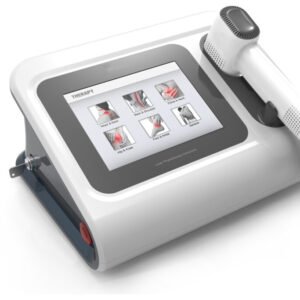Low Level Laser Therapy (LLLT) For Musculoskeletal Pain
Musculoskeletal pain affects 116 million Americans annually at a cost of $635 billion a year in medical bills, lost productivity and missed work or school. The current treatment for musculoskeletal pain includes modalities, immobilization, medications, chiropractic care, physical therapy, behavioral management, injections and/or surgery. These standard therapies have their particular associated risks/side effect profiles including peptic ulcers/gastric bleeding, systemic effects (cardiovascular, infections (including epidural abscess), narcotic dependency/addiction, deformities, neurologic deficits, and surgical complications. The natural history of chronic pain is one of increasing dysfunction, impairment and possible disability. With the predicted epidemic of chronic pain in developed countries, it is imperative to validate cost-effective and safe techniques for managing painful conditions which would allow people to live active and productive lives. The wider acceptance of low level laser therapy LLLT by more specialties around the world would allow for additional treatment options for patients. Such new cost-effective therapy for pain could elevate quality of life while reducing financial strains.
For over forty years, low level laser (light) therapy (LLLT) and LED (light emitting diode) therapy (also known as photobiomodulation) has been shown to reduce inflammation and edema, induce analgesia, and promote healing in a range of musculoskeletal pathologies.
There are three different types of pain; nociceptive, neuropathic and central. The current medical treatment of pain or analgesics is directed at various steps of the pain pathways. Clinically, low level laser therapy (LLLT) can treat nociceptive and neuropathic pain, while central pain has not yet been proven to be responsive to LLLT.
Low Level Laser Therapy (LLLT) sometimes known as Low Level Light Therapy or Photo-biomodulation (PBM) is a low intensity light therapy. The effect is photochemical not thermal. The light triggers biochemical changes within cells and can be compared to the process of photosynthesis in plants, where the photons are absorbed by cellular photoreceptors and triggers chemical changes.
LLLT is the application of light (usually a low powered laser or LED typically in the power range of (10mW–500mW). Light with a wavelength in the red to near infrared region of the spectrum (660nm–905nm), is generally employed because these wavelengths have the ability to penetrate skin, and soft/hard tissues and are proven in clinical trials to have a good effect on pain, inflammation and tissue repair. The power density (irradiance) is usually between 5W/cm2 and is applied to an injury or to a painful site for 30–60 seconds a few times a week for several weeks. The result is a reduction of inflammation, pain relief and accelerated tissue regeneration. In most cases the low laser / LEDs used for LLLT emit a divergent beam (not focused or collimated) because collimation is lost in tissue, but as a consequence ocular risks are also diminished over distance in divergent beam.
Indeed, low Laser therapy has a wide range of clinical applications, including acute musculoskeletal injuries, chronic inflammatory conditions as well as accelerating wound healing. To meet the growing market for this new technology we have developed the Physiotherapy Laser System: SIFLASER-1.4. This FDA approved Medical Physiotherapy Laser System meets all the previously covered laser physiotherapy standards above making for a highly useful tool for a plethora of musculoskeletal injuries and for wound healing.
This procedure is performed by an eligible physiotherapist.*
Disclaimer: Although the information we provide is used by different doctors and medical staff to perform their procedures and clinical applications, the information contained in this article is for consideration only. SIFSOF is not responsible neither for the misuse of the device nor for the wrong or random generalizability of the device in all clinical applications or procedures mentioned in our articles. Users must have the proper training and skills to perform the procedure with each Laser system.
The products mentioned in this article are only for sale to medical staff (doctors, nurses, certified practitioners, etc.) or to private users assisted by or under the supervision of a medical professional.
.

